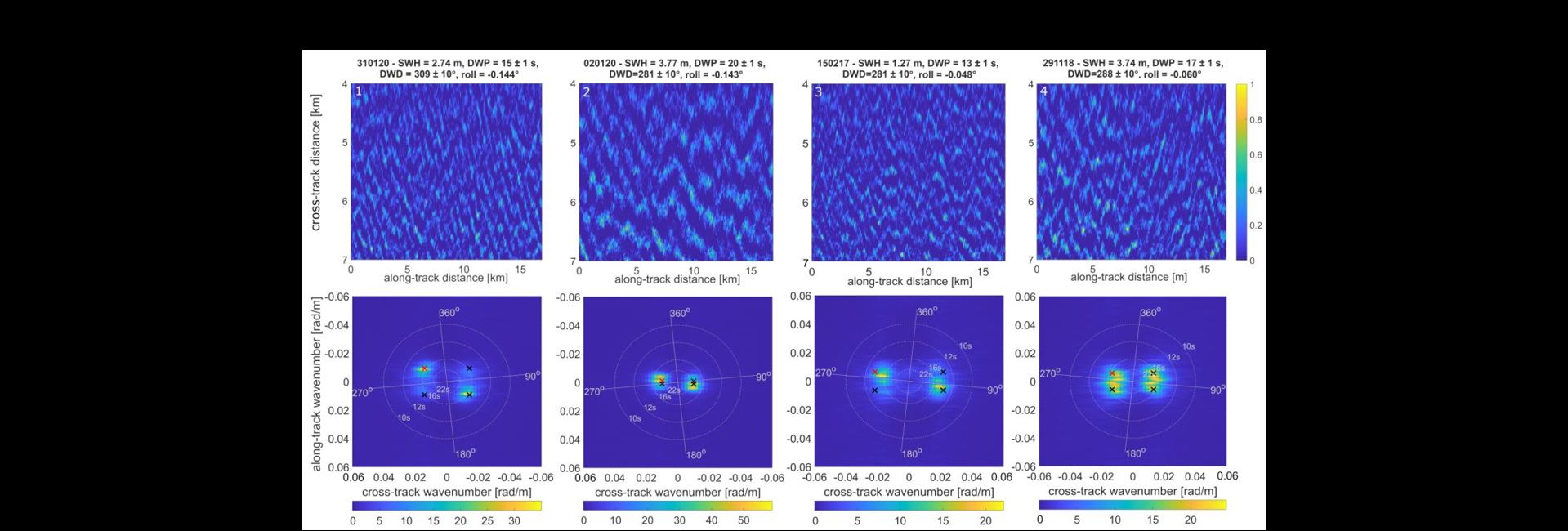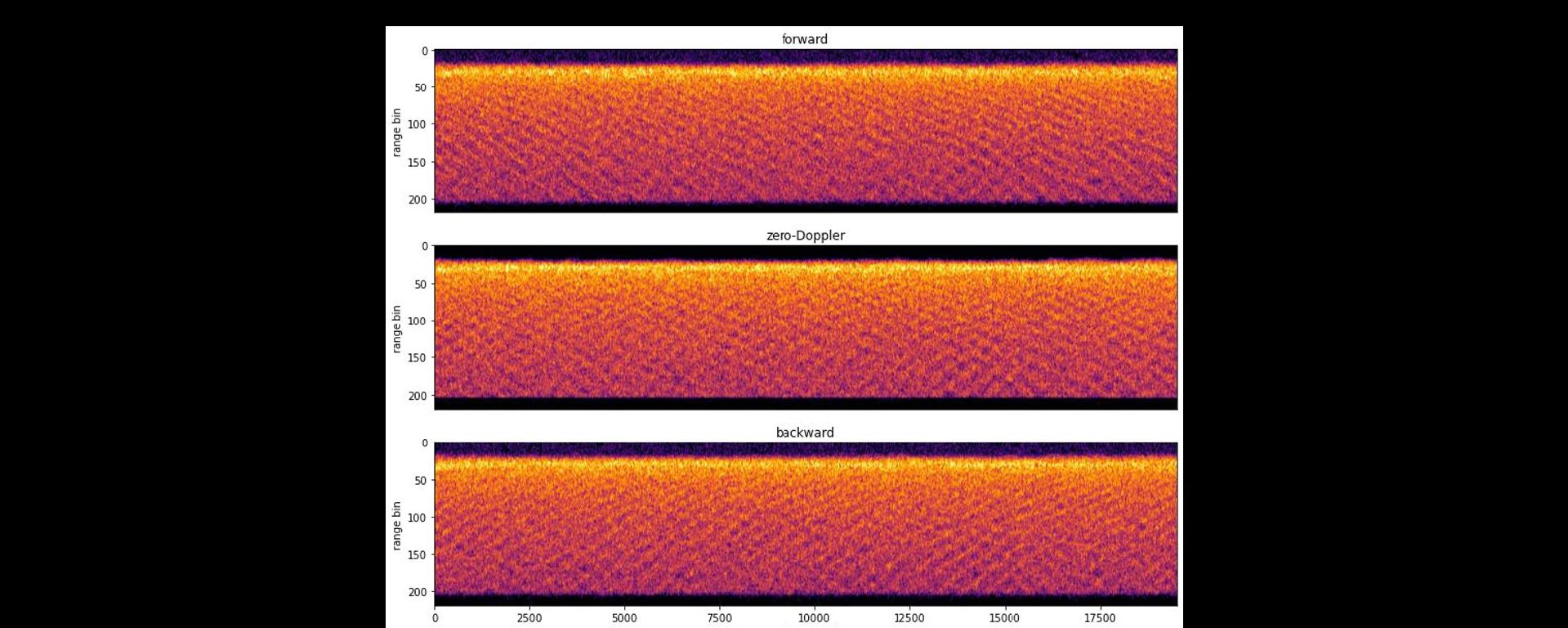A new study led by SARWAVE consortium members (Kleinherenbrink et al 2024), provides an in-depth analysis of SAR altimeter waveform tail modulation and its associated cross-spectral analysis. The obtained results open the possibility to consider cross-spectral stacks for retrieving ocean-wave spectral information for certain combinations of wavelength and propagation direction, contributing to better monitoring of global wave field, and advancing towards more consistent sea-state-bias corrections.

Until recently, intensity modulations in synthetic aperture radar (SAR) altimetry waveform tails have been considered a nuisance for geophysical-parameter retrieval. These modulations are actually predictable and might be exploited using a spectral analysis of the waveform tails.
Altiparmaki et al. (2022) performed a first analysis on the interpretation of SAR altimeter spectra. In Kleinherenbrink et al 2024, a fast numerical model is developed to explain the modulation mechanisms in focused SAR altimetry waveform tails. Using numerical solutions, standard analytical closed-form solutions are demonstrated to be invalid to retrieve ocean-wave-spectra retrievals from nadir altimeters.
Although not valid, a closed-form derivation provides intuitive insights about the information contained in a SAR altimetry cross-spectrum. Under moderate environmental conditions (significant wave heights of ~2 m), a closed-form solution might still be useful to infer swell-wave spectra from swath-altimetry SAR spectra at incident angles of ~4°.
Comparable to side-looking SAR ocean processing, the cross-spectral analysis for nadir signals reduces noise and might remove the 180-degree ambiguity of the wave direction. Since the synthetic aperture length of nadir altimeters is larger than sidelooking imaging SARs (e.g. Sentinel-1, RadarSat, Gaofen-3), sublook processing can be performed to compute multiple cross-spectra for the same scene.

With a slightly changing observation geometry, the cross-spectra reveal slightly different components of the ocean-wave spectrum. The resulting stack of cross-spectra can thus be used to improve the retrieval of ocean-wave parameters. Retrieved ocean-wave parameters shall then enhance the sampling of the global wave field, but also serve to advance more consistent sea-state-bias corrections.
Reference:
Kleinherenbrink, M., Ehlers, F., Hernandez, S., Nouguier, F., Altiparmaki, O., Schlembach, F., Chapron, B.’ Cross-spectral analysis of SAR altimetry waveform tails’, in IEEE Transactions on Geoscience and Remote Sensing. 2024 10.1109/TGRS.2024.3402390.